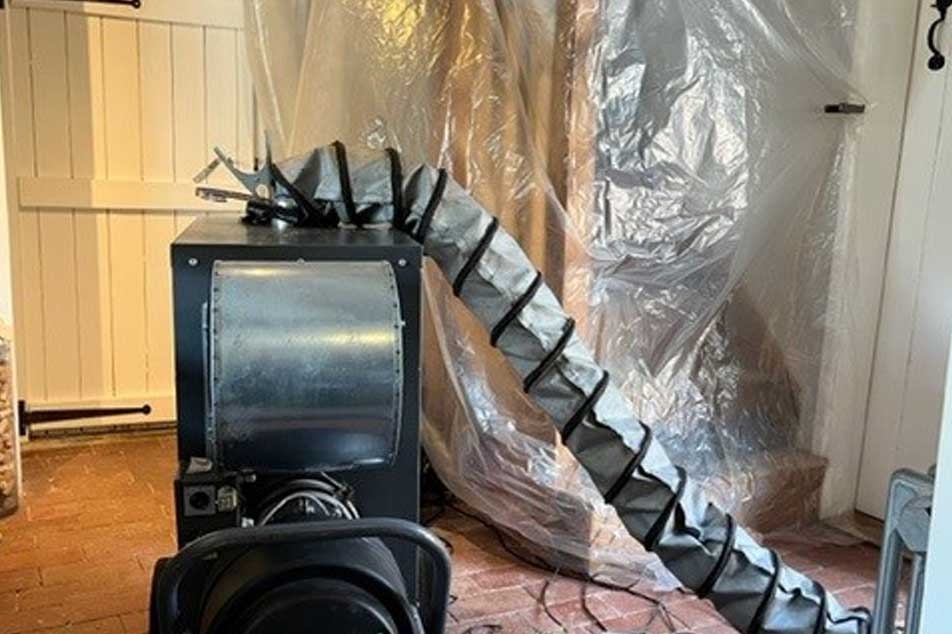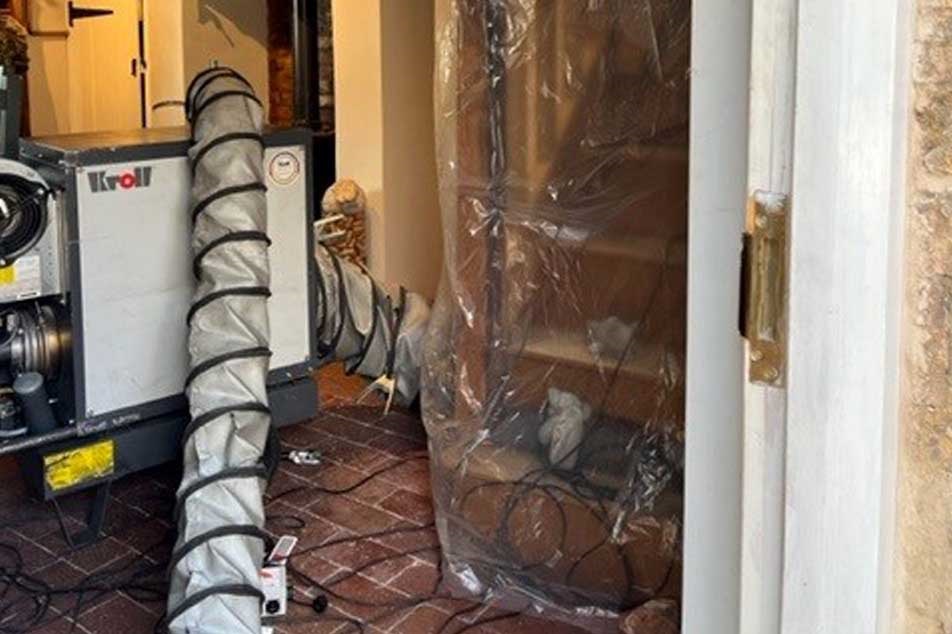Could ‘Heat Treatments’ be the next big innovative solution?
As we rapidly approach our centenary within the Property Care Association (92 years so far), it would be fair to say we have a fair bit of experience and knowledge when it comes to controlling wood boring insects.
Despite this, we are not blinkered to the fact the world changes, normally through new and innovative technology or changing regulations on pesticides. It is part of the reason why we hold annual conference events to ensure both our PCA members and other associated building professionals are kept ‘up to speed’.
With these constant changes in mind though, it is only right that we give consideration to alternative means of treatment, be it that they are new and emmerging or those that are a little more established but perhaps less mainstream.
A chance encounter leads to an innovative treatment solution
With this in mind, and following a chance encounter at the British Pest Control Association (BPCA) Pestex Expo, some members of the PCA technical team travelled up to a period cottage on the outskirts of Derby to observe and carry out some monitoring of a heat treatment solution to eradicate an infestation of Common Furniture Beetle.
We are sure most of you are familiar with the principles of heat treatment where heating timber to a “52 degrees core temperature for 1 hour will kill all life stages of most insect and mite pests, including eggs, larvae, pupae, diapause states and adults.” It is more commonly used for the treatment of timber pallets, where the pallets can be placed in a suitable container and heated to prevent the import and spread of unwanted pests.


Can these treatments be applied to the built environment
Whilst tried and tested for the treatment of pallets, transferring this application to the built environment is less commonly adopted. We were keen to see how viable it was to get to the right temperature in the centre of a structural beam and if this temperature could be sustained for a sufficient length of time to control the infestation.
After an inspection, although there was an abundance of exposed timber, the epicentre of active infestation appeared to be around a new staircase where reclaimed/recycled timber had been used and the newel post (approx. 100mm x 100mm) was showing signs of the most activity. The base of the newel post was finished below a flagstone floor. Although there were also several cosmetic furnishings that had extensive signs of activity but these were to be treated separately and not in situ like the timbers that were of interest to us.
How we tested the treatment solution
We used a combination of surface loggers and deep probes to try and ascertain the temperature at depth within the timber. Loggers were placed towards the base of the newel post where activity appeared most active and in an adjacent and much larger structural beam which was thought to be within the treatment area. We were keen to see how the treatment worked on this larger built-in timber to determine if the treatment was a viable alternative for ‘difficult to treat' beam ends.
Treatment tests were not ‘plain sailing’
The extreme heat did test the durability of some of the monitoring equipment. Most survived relatively unscathed, but some equipment did not provide full data sets. The newel post appeared to achieve the goal of a core temperature of in excess of 50°C for over an hour. The main caveats here are that this was timber with access to all faces and we will be back at the next flight season to see any new signs of activity.
Regrettably, the larger structural timber was not the main focus of the treatment and unfortunately was only partially enclosed within the treatment area. As a result, we didn’t see the required temperature for the required duration on our monitors. BUT…the treatment wasn’t set up in a way where it would ever have been achieved.
The conclusion…
So unfortunately we did not achieve the answer to all our question at the end of this experiment. We have learnt that this type of treatment might be viable as an alternative in some situations. We can still not say we have seen evidence that it is a viable option on sizeable built in timber.
In short, and unfortunately, the treatment in this scenario did not provide answer to all the questions we had, but we are keen to continue to explore the possibilities with this alternative type of treatment.
What to learn a bit more?
If you want to find out more about the potential use of heat treatments for yourself, then Dave Hammond of Thermokil will be at the ‘2022 International Property Care Conference’ and will be providing a short presentation on the technology. However, we will also be exploring other solutions and technologies over the course of the conference as well.
To find out more about the upcoming conference and the programme of speakers and presentations, simply click on the button below…
More about the upcoming conference >>